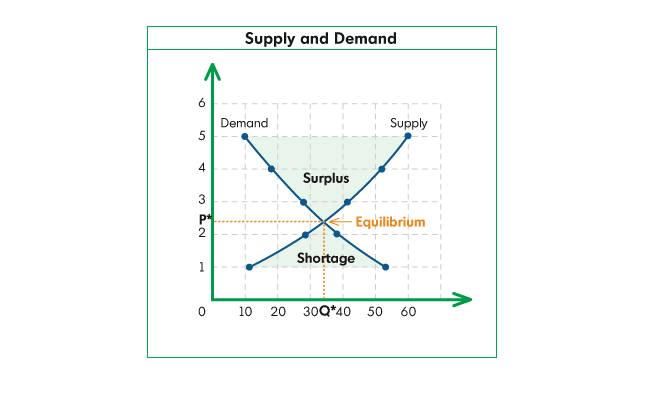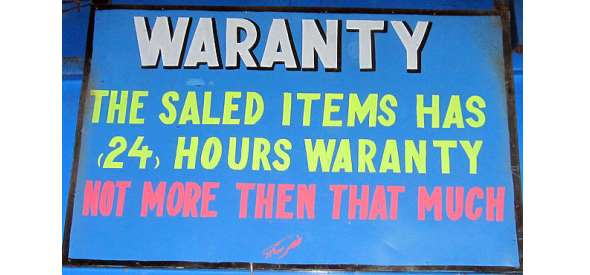
I’ve been batting this idea around in my mind for a while now while trying to discern why certain deals are worth pursuing while others can be a waste of time.
For me the net present value of a deal is a function of Spread, Scale, Time and The Probability of Malfunction. And understanding what deals are most valuable to you is key to making the points & miles game work for you rather than the other way around.
Spread
Most deals are an arbitrage opportunity we take advantage of when the rewards are worth more than they cost. I call this the Spread of a deal.
Say for example you buy a $500 Visa Gift Card with a $3.95 activation fee with a 2% cashback card. And you liquidate it by buying a money order for $0.88. The spread is around 1.1%: 2% in credit card rewards minus around 0.9% in fees.
Scale
Scale is the dollar value of each transaction times the number of times you can repeat the transaction.
In the Visa Gift Card example each $500 purchase and liquidation nets us $5.25.
If we can buy $10,000 worth of them per day and liquidate the same amount that’s 20 x $5.25 = $105
And if we can repeat it every day for a month that’s around $3,000.
Everything runs into a scale limitation at some point. In the Visa Gift Card example there are limits on how many cards you can buy in a day, how many money orders you can buy in a day, and at scale potential problems depositing money orders.
Time
No matter the deal, it takes Time to complete transactions.
In the Visa Gift Card example we have to go to the retailer that sells the gift cards. Then we have to go to one or more merchants to buy money orders with those gift cards. Then we have to deposit those money orders into a checking account. Then we have to stay on top of paying our credit card bills with those funds.
And don’t underestimate the Cognitive Bandwidth this scurrying around requires. The human brain generates its best ideas when it’s free from distraction. And fiddling with the tasks some deals require is the antithesis of an unencumbered mind.
But not all time is equally valuable. For example, if I’m busy with some time sensitive work or personal commitment the value of my time is high. If I’m on a airplane I’m effectively trying to pass time so the value of my time is low.
Time is money so the value of the time spent on a deal adds up to erode the Spread.
Probability of Malfunction
Each step in a deal has the potential of Malfunctioning. These Malfunctions range from small and temporary to large and painful.
In the Visa Gift Card example, the retailer might be out of cards. Your credit card(s) might decline the transaction. You might misplace some or all of the gift cards (Breakage).
On the liquidation front, some of the gift cards might fail to activate. Your favorite retailer might change their policies about accepting gift cards to pay for money orders. The money order printer might jam after draining your gift card. They might ask for your SSN which in turn gets stolen by an unscrupulous person for identify theft. The retailer might feel like detaining and questioning you for Risky Business.
The bank(s) you’re depositing the money orders with might not like this type of activity. They might shut your account down. They might file a report that leads to time-consuming questioning or worse in the form of a structuring charge.
Finally, the credit cards you’re using might not like this activity. They might shut down your credit card accounts and others at the same address. They might not let you get new accounts with them in the future. They might confiscate rewards before you have a chance to redeem them.
Just as Time erodes our spread, the Probability of Malfunction should be considered when exploring the value of a deal.
The Net Present Value of a Deal
In Microsoft Excel, the NPV function can be used to determine the net present value of a stream of payments over time.
It can be difficult to predict a stream of income from a deal given the volatility associated with potential Malfunction(s). But it’s important to think along these lines because it informs where we should spend our time.
The key point: A stream of payments is worth more than a one-off deal.
We should spend our time executing and experimenting with deals with a high Net Present Value. These are deals with a healthy Spread and meaningful Scale that require as little Time as possible with the lowest Probability of Malfunction.
Summing it up:
The value of a deal is a function of Spread, Scale and Time. Looming over this is the Probability of Malfunction:
NPV (deal) = f(Spread + Scale – Time) * (1 – P(Malfunction))
Example
Let’s finish fleshing out the Visa Gift Card to Money Order deal.
It earns high marks for Spread and Scale for some people. If you’ve got a local retailer that lets you liquidate a fat stack of Visa Gift Cards to purchase money orders it’s a good side hustle. $3,000 a month with a 2% back credit card.
Let’s set aside the value of Time and P(Malfunction) for a moment and estimate what a stream of $3,000 payments each month is worth. The longest I’d be willing to count on any deal lasting is 2 years. $3,000/month x 24 months is $72,000. If we wanted to get fancy we could actually use the Excel NPV function. It discounts the value of the stream by account for the risk free rate of return to account for the time value of money.
At current rates that’s around $70,000.
But how much Time does it take you? And what is the P(Malfunction)?
I know for me personally I can typically only liquidate between $0 and $1,000 per visit to WalMart. And they don’t accept Visa Gift Cards for Money Orders. And I only conveniently pass a WalMart a few times a month. Local grocery stores aren’t friendly about accepting Visa Gift Cards for Money Orders. In total it’s a long slow grind because my operation lacks Scale. As a result, this deal is a total non-starter for me.
But for those in a different situation it can be a great deal. Say you can buy $10,000 worth of Visa Gift Cards in a half an hour. And liquidate them in another half an hour. Then deposit them and manage credit card payments in another half an hour. That’s 1.5 hours per day for $100: About $66/hour tax free.
What about the Probability of Malfunction? If a deal is certain to malfunction, P(Malfunction) is “1”. So the deal is worthless.
If a deal has very low probability of malfunction the value of the deal is a function of Spread and Scale minus the value of our Time spent on the deal.
There are of course different types of malfunctions. If you lose one Visa Gift Card that can erode the profits from quite a few transactions. But if you’re shut down by a bank that takes away all the points you’ve earned with them that completely destroys the deal. In fact, it takes you negative since the Spread and Scale turn negative and your Time is wasted.
It’s really hard to estimate the probably of malfunction of a deal. Because everything is fine until it isn’t. And when it isn’t it’s hard to anticipate the cost of collateral damage.
With Visa Gift Cards to Money Orders I’d estimate the P(Malfunction) at somewhere around 20%. This is the sum of breakage and potential lost rewards due to credit card shutdown.
A more likely scenario with this one is that your current source(s) that will sell you Money Orders will change their policies and stop accepting Visa Gift Cards. Then your stream of $3,000/month in profits will stop and the Net Present Value of the deal will be diminished.
In total, if you’ve got the right pieces in place locally and we diminish the value of this deal by 20% (due to the Probability of Malfunction) it makes it around a $50/hour tax-free side job if you can do $10,000 per day if you can get it done in 1.5 hours per day. Not bad work if you can get it.
Conclusion
So what’s the upshot of all this?
My point in sharing this is to encourage discussion and to scrutinize the value of deals we’re taking advantage of as well as deals we’re considering. And to be mindful of the Time deals take and the cost associated with a potential Malfunction. Then seek to address the limiting reagents that are blocking us from making deals more profitable.
Even if you’re unconsciously competent in analyzing the value of a deal I hope it’s worthwhile discerning which of the deals you’re currently pursuing are worthwhile. If they are worthwhile, consider what you can do to make them better. If they’re not, devote your energy towards more rewarding endeavors.





Hi Robert,
Excellent post. Living in NYC, I do not bother with the MO/Walmart (as PO not longer accept) MS strategy. I believe you are estimating low on getting it all done in an hour and a half (1 1/2) including driving, parking at Walmart etc. I am very judicious on the use of my time in this game. My attitude is I can always make more money but never more time. Unless it is low hanging fruit, I do not bother with MS for points/miles and just use regular spend.
Again, wonderful post to get people to evaluate how they play this game.
Thanks Giovann.
I agree that 1.5 hours is best-case. I’ve got to imagine there are some people out there with nearby retailers with the right policies that make it work well. But still…
Like you say – the point is to encourage us all to scrutinize how we play the game. If it’s not working for us, it’s time to change the game or move on.
Best post of the New Mileonomics thus far, IMO. It acts as a sobering counterweight to all the reasons–real and imagine–we tell ourselves for why we do some of the crazy things we do in this “hobby”.
More than once, I have gotten “caught up” in the hysteria surrounding a “deal”. One of the worst/best examples is driving around to all of the OfficeMax’s nearby, just to load up on $200 gift cards, to save $30. (Of course, “save” is relative because I would never have bought a gift card for $6.95 in the first place!) What a stupid waste of my time, but I didn’t actually understand that until I realized a few of my gift cards became drained after sitting on my desk for a week. The ensuing follow-up to fix that was a major time waster!
I like your formulaic approach to analyzing a deal. It doesn’t capture a few aspects that are more important to me than to most but I admit I dont know how they can be added to your equation. But I try to keep in mind the following:
1) The “psychic weight” of the deal. It’s similar to cognitive bandwidth–for me, it’s the mental unease of knowing I have something unresolved (get cards, get money orders, make sure they clear, etc., etc.) until I can consider a task to be done.
2) The hype surrounding a deal. Just because it’s in all the blogs and all the “smart people” are doing it doesn’t mean it’s a good idea or even a healthy practice. E.g., getting free food at lounges or jumping through multiple hoops for an IHG Accelerate promotion.
3) The actual value of the “reward”. Even after I get a bundle of points from a deal, I now have an additional psychic weight of finding a good reward redemption! And if I DO manage to get a decent redemption value, I find that I sometimes lie a bit to myself about how cheap the room/flight actually was…when the rality was that I went through a lot of work, as you outline in the post.
Seems like I find myself questioning the value of this hobby so much these days. More posts like this one help me keep a more sober view of it.
All terrific points and thanks for the kind words @bluecat.
Points 1 and 3 particularly resonate with me.
It’s really important to me to gauge how deep the discounts I’m getting on travel *really* are because, perhaps like you, I’m prone to using this stuff to give myself permission to spend more than I should on travel.
I’ve had a post or two in mind in that general area I’ll look forward to posting.
Speaking of “Malfunction”… yikes! ….
http://milesperday.com/2018/03/lost-2800-gc-flipping/